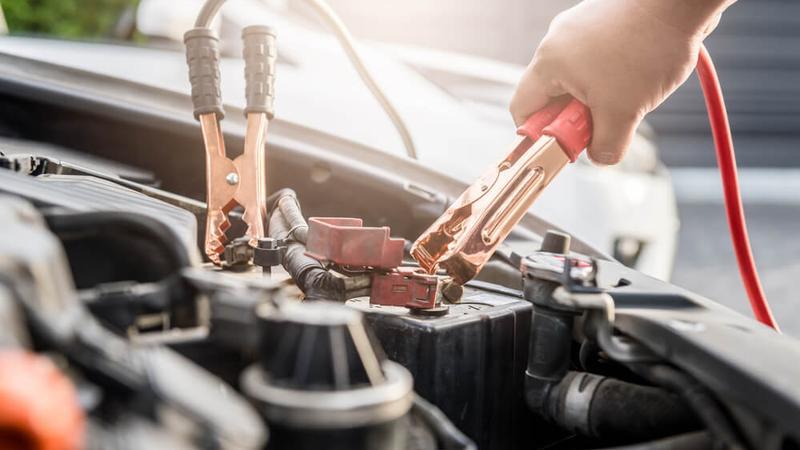So, you head outside to start your vehicle, but nothing happens. You try it again and still, nothing happens. A slight panic starts to build as you’re not sure what to do.
Learning how to safely boost a battery is a skill drivers can learn and is quite easy to do. Doing it yourself can save you time and frustration.
Causes and signs of a dead vehicle battery
Vehicle batteries may die because electrical accessories have have been left on too long without restarting the engine, or if the battery gets too old. If the vehicle has not been started in a very long time, that could also cause the battery to die. Vehicle batteries may not last their typical life span of three to five years, so check with the warranty as it may help with the cost of having it replaced.
Signs your battery may be about to die include a sluggish start, flickering headlights or interior lights, power windows beginning to move slowly or even a warning light on the dashboard that stays on while you’re driving. These are all signs you should have your electrical charging system inspected.
How to boost a dead vehicle battery
Boosting a dead battery is relatively easy, since most passenger vehicles have a battery with the same voltage of 12.6 volts. You just have to find one to boost your dead battery. Once you flag someone who’s willing to help, place the boosting vehicle close to the vehicle with the dead battery, ensure they do not touch, place them both in park or neutral, and put the parking brakes on and turn off the engines. Next, follow these steps:
- Clean the terminals of both batteries before you begin. Steel wool can do the trick, but if the terminals are only slightly dirty, you may just need a paper towel or rag to clean them. Ensure terminals are clean so you have a solid connection going from the boosting battery to the dead battery.
- Find the positive and negative terminals. The positive terminal will have either “POS” or “+” beside it and the negative terminal would have either “NEG” or “-” beside it. The positive terminal is also thicker in diameter than the negative terminal.
- For the dead battery vehicle, ensure all plug-in accessories are unplugged, such as phone charger or GPS. Turn off vehicle accessories as well, such as climate controls, wipers and stereo. This allows all of the charge to go directly to starting the engine of the dead battery and nothing else.
- Attach one of the red cables to the positive terminal of the boosting battery and the other end to the dead battery. If you have someone helping you, ensure they keep the clamps away from one another while holding them. If you are doing this alone, you can place them spread apart on the ground, provided the ground is dry.
- Attach the black cable to the negative terminal of the boosting battery. For the final connection, you may think the last black cable attaches to the negative terminal, but that could be a mistake. The best place is to attach that black cable to bare metal away from the battery. You have now made an electrical circuit and if there is a spark, you want to keep the spark away from the hydrogen gases the dead battery may be leaking. This could ignite the battery.
- Start the engine of the boosting vehicle and let it run for a few minutes. Then attempt to start the engine of the vehicle with the dead battery. If it doesn’t start right away, confirm the boosting cables are attached securely and try again. If still not starting, wait a few more minutes to ensure there is enough power coming from the boosting battery.
- Once the engine starts, keep it running and remove the cables in the reverse order you attached them: black from the dead vehicle, black from boosting vehicle, red from boosting vehicle and finally red from dead battery. Just as you did while attaching them, ensure the clamps do not touch one another.
Keep the vehicle running and take it for a drive of at least 15 minutes, just to ensure the battery stays charged. If the battery fails again even after 15 minutes or more, it would be wise to have the battery and charging system inspected. Batteries won’t last forever and it may be time to purchase a new one. If you need to boost your battery more than once in a short period of time, get it checked. It’s not worth being stranded just to get a little more life out of that battery.
Now, you may ask, will your auto insurance policy cover a dead battery? Unfortunately, no. Insurance won’t cover what constitutes as general maintenance, so if it comes down to having to purchase a new battery and your battery warranty is up, you’ll have to pay for the replacement out of pocket .
